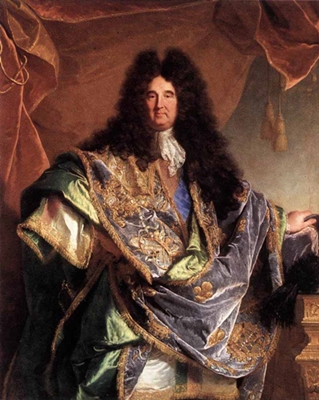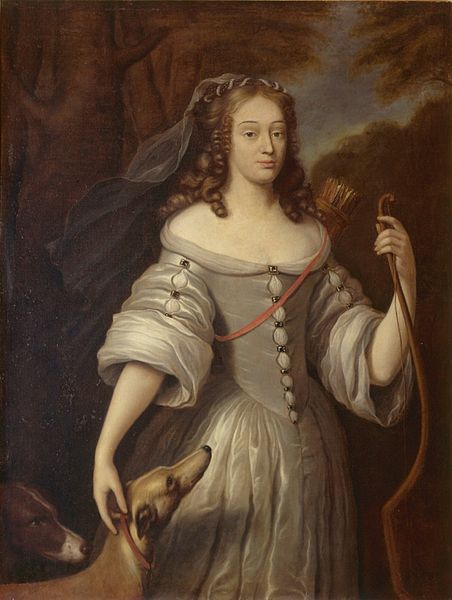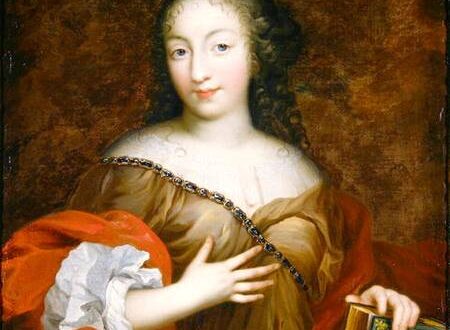Marguerite-Louise d’Orléans, Grande-Duchesse de Toscane
Born on 28 July in 1645 at the château de Blois, Marguerite-Louise was the first child and daughter of Gaston de France and his second wife Marguerite de Lorraine and thus a first-cousin to Louis XIV.
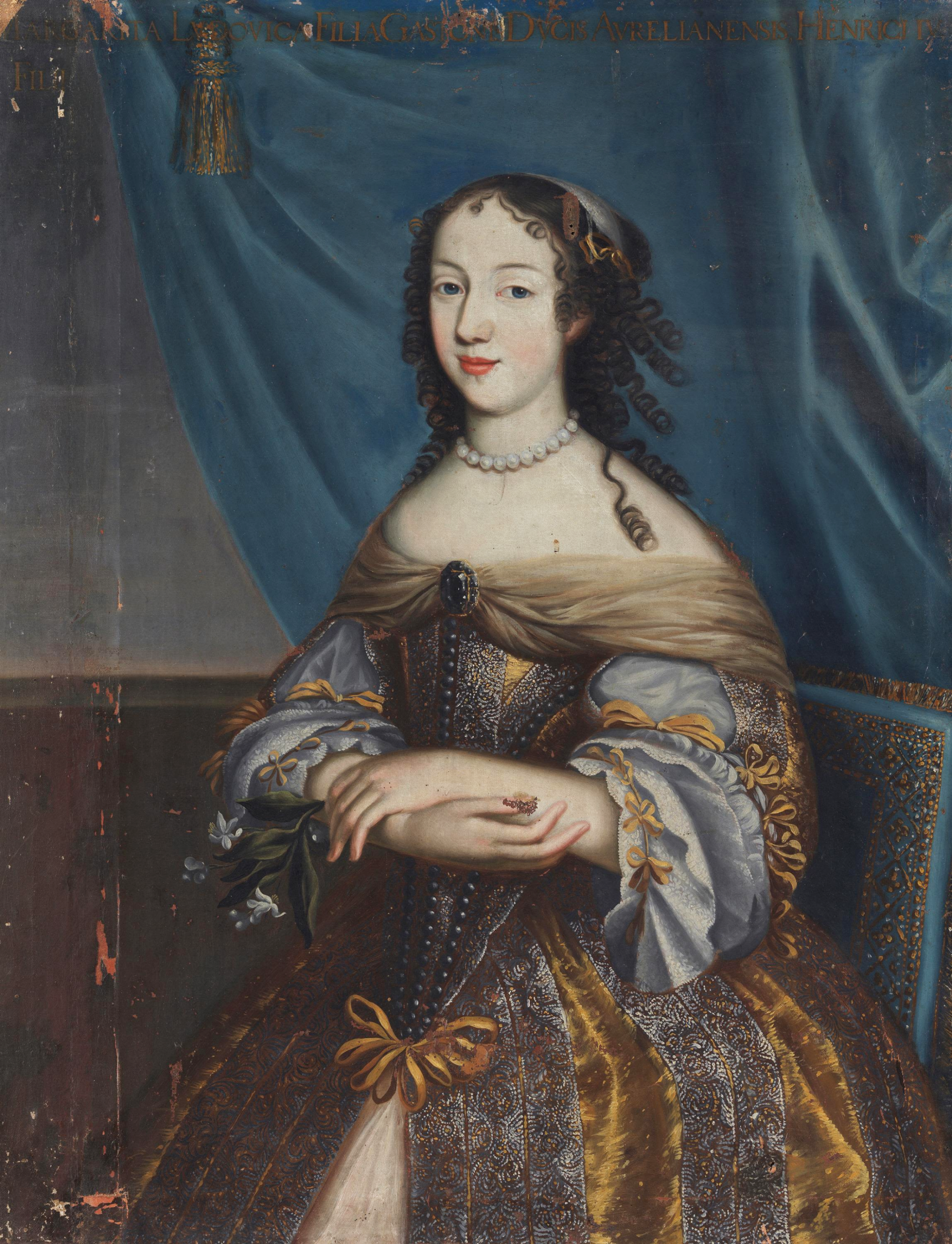
Gaston de France was the brother of Louis XIII and married Marguerite de Lorraine in secret and against the will of his kingly brother, which led to the marriage being annulled once Louis XIII found out about it. The couple married again and again the marriage was annulled. As Louis XIII was on his deathbed and the end of his reign near, he finally allowed his little brother to officially marry Marguerite. Louis XIII died in May 1643 and the couple married again, this time validly, in June 1643.
Marguerite-Louise was styled Mademoiselle d’Orléans upon her birth and had an older half-sister, Anne-Marie-Louise d’Orléans, from her father’s first marriage to Marie de Bourbon.
She spent most of her childhood at Blois in company of her mother and later her father after he was exiled from court for his involvement in the Fronde. Gaston and Marguerite had four more children between 1646 and 1652: Élisabeth-Marguerite, Françoise-Madeleine, Jean-Gaston and Marie-Anne d’Orléans. Both Jean-Gaston and Marie-Anne died in infancy.
Mademoiselle d’Orléans got along well with her half-sister la Grande Mademoiselle, although the latter did not think well at all of their father’s second wife, and also with the young Louise de la Valliere, who was a playmate for Gaston’s daughters and educated together with them.
In contrary to the shy Louise, Mademoiselle d’Orléans was a rather lively thing. She was naturally merry and loved to dance and sing. Later, after the death of Gaston in 1660, mother and daughters left Blois for Paris and settled there. Marguerite-Louise took every chance she got to tour the various salons and stopped at that of her half-sister every day. They also talked about marriage…
Before his demise, Papa Gaston had in mind to marry Mademoiselle d’Orléans to his nephew Louis XIV. The young King was at an age where marriage became unavoidable and he was already quite versed in matters of what-goes-where. At that time, he was madly in love with Marie Mancini, a niece of Cardinal Mazarin. Gaston found the idea of Louis marrying Marguerite-Louise very fabulous…. Louis only wanted to marry Marie Mancini…. but Louis had no say in the matter. Gaston hoped that during a scheduled visit of Louis XIV to Blois, the young King might come to fancy Marguerite-Louise…. unfortunately, just at the time the visit was scheduled, Marguerite-Louise caught the measles and was bedridden. The visit was shortened, Louis did not develop a fondness for Mademoiselle d’Orléans and a more advantageous marriage prospect appeared in form of Marie-Thérèse d’Autriche.
Another possible marriage candidate was Charles-Emmanuel II, Duc de Savoie. Apparently, Mademoiselle d’Orléans was in first quite happy with that suggestion, but it did not work out. She and la Grande Mademoiselle blamed Marguerite de Lorraine for it, saying she was not well versed enough in these matters and ruined the whole thing. The Duc de Savoie later married her younger sister Françoise-Madeleine. He actually wanted to marry Marie-Jeanne-Baptiste de Savoie, with whom he was in love, but his mother disagreed with that in first.
 Then it was hinted that Cosme de Médicis, on behest of his father Grand-Duc de Toscane Ferdinand II de Médicis, might have an interest to marry Mademoiselle d’Orléans. She was not disinterested in first, but the negations took longer than anyone expected and by the time it got serious, said Mademoiselle was ogling someone else. It was her cousin Charles de Lorraine, whom she met in Paris and with whom she dared to show herself without company, all flirty and bold. The court was shocked by this scandalous behaviour of the two unmarried young people. Marguerite-Louise and Charles get very friendly with each other, while the marriage talk with Cosme was in full swing. (Charles later became Duc de Lorraine as Charles V.)
Then it was hinted that Cosme de Médicis, on behest of his father Grand-Duc de Toscane Ferdinand II de Médicis, might have an interest to marry Mademoiselle d’Orléans. She was not disinterested in first, but the negations took longer than anyone expected and by the time it got serious, said Mademoiselle was ogling someone else. It was her cousin Charles de Lorraine, whom she met in Paris and with whom she dared to show herself without company, all flirty and bold. The court was shocked by this scandalous behaviour of the two unmarried young people. Marguerite-Louise and Charles get very friendly with each other, while the marriage talk with Cosme was in full swing. (Charles later became Duc de Lorraine as Charles V.)
An agreement was eventually reached and Mademoiselle officially engaged to Cosme. She did not like it and continued to make merry with the Prince de Lorraine. Cosme was not at all to her taste. He had the reputation to be a proper bore, to seldom smile in public, and to be devout to a, for Mademoiselle d’Orléans, ridiculous degree.
The whole thing went ahead nevertheless. Marguerite-Louise was married to Cosme by proxy in April 1661… and continued to see her Lorraine cousin. On the day visits of diplomats, who wanted to congratulate her on her marriage, were scheduled she attempted to sneak away in order to go hunting and had to be stopped by her half-sister.
Marguerite-Louise didn’t look at all forward to departing France and caused another scandal by insisting Charles de Lorraine had to accompany part of the way. She tried to delay her departure, but did not find reasons enough. The bride, in company of Charles, was sent to Marseille, where a fleet of nine galleys awaited her. She arrived in Tuscany on 12 June and made her formal entry into Florence on 20 June with much pomp. The marriage celebrations, featuring a parade of over 300 carriages, were huge and nothing Florence had seen before. As wedding gift from her father-in-law, Marguerite-Louise received a pearl that apparently was as big as small pigeon’s egg.
Tuscany was hell for Marguerite-Louise. She did not like it there. She did not like her groom, whom she met with great indifference. She did not like his family either. All she wanted was her Prince de Lorraine, whom she feared she would never see again. At the same time, her groom was still very much in love with Marie-Jeanne-Baptiste de Savoie…. and this was the very woman Charles de Lorraine had been engaged to. A bit of a nightmare. Bride and groom apparently only shared a bed for a week and two days after their wedding, the bride insisted the crown jewels of Tuscany ought to be handed to her. Cosme told her he does not have the authority to give them to her like that. She talked him into handing some over at least and those she tried to smuggle out of the country. Her father-in-law got wind of it and prevented it last-minute. After that, Marguerite-Louise’s relationship to her husband and his family was pretty much ruined.

She started to argue with her mother-in-law over precedence, with her father-in-law about her spending, with her husband about pretty much everything. One time, she said she would smash a bottle over his head if he did not leave her chamber at once. The large sums of money she spent, made her not exactly popular with the people of Florence and they gossiped about how two young grooms were permitted to enter Marguerite-Louise’s rooms whenever they pleased and even when the hour was late.
Marguerite-Louise felt treated badly by the family of her husband and sent letter after letter full with complaints home to France, to Rome, to her family, to her cousin Louis XIV, to anyone who might be able to get her out of Tuscany… and then Charles de Lorraine made an appearance at Florence. It was only a brief visit, during which he was entertained in the Ducal Palace by the Ducal family, but it was a very welcome visit in the eyes of Marguerite-Louise and it changed the tone of the letters she sent home.
While she in first just complained of unfair treatment, she now accused the family of her hubby to spy on her and of being maltreated by them after they had dismissed her French servants. She also claimed having French cooks for herself was necessary, because the Médicis’, who had a bit of a poison reputation, planned to murder her by poisoning her meals.
Louis XIV’s reaction to all of that was not what she had hoped for. He disregarded all of her complaints. The King was generally of the opinion that a married woman, unless she was his mistress or later on one of his daughters, was duty-bound to her husband and ought to do what he says. He also did not have the habit, unless it was unavoidable for reasons of State or personally annoyed him, to involve himself in the domestic disputes of his relatives. The French court, in the meanwhile, felt quite sorry for Marguerite-Louise. Louis XIV eventually agreed to have a look at the matter, after the Grand-Duc also bombarded him with letters and insisted something had to be done. He sent the Comte de Saint-Mesme en route to Tuscany in order to have a close look at what was going on.
The Comte de Saint-Mesme talked with everyone involved and Marguerite-Louise told him that all she wanted was to go home to France. Saint-Mesme sympathised with the idea. He returned to France without finding any solution to the domestic problems, which left the Grand-Duc and Louis XIV a bit dumbstruck. Having learned that the Comte and the French Court were on her side of things, Marguerite-Louise now started to treat her boring and devout husband as her inferior whenever she could.
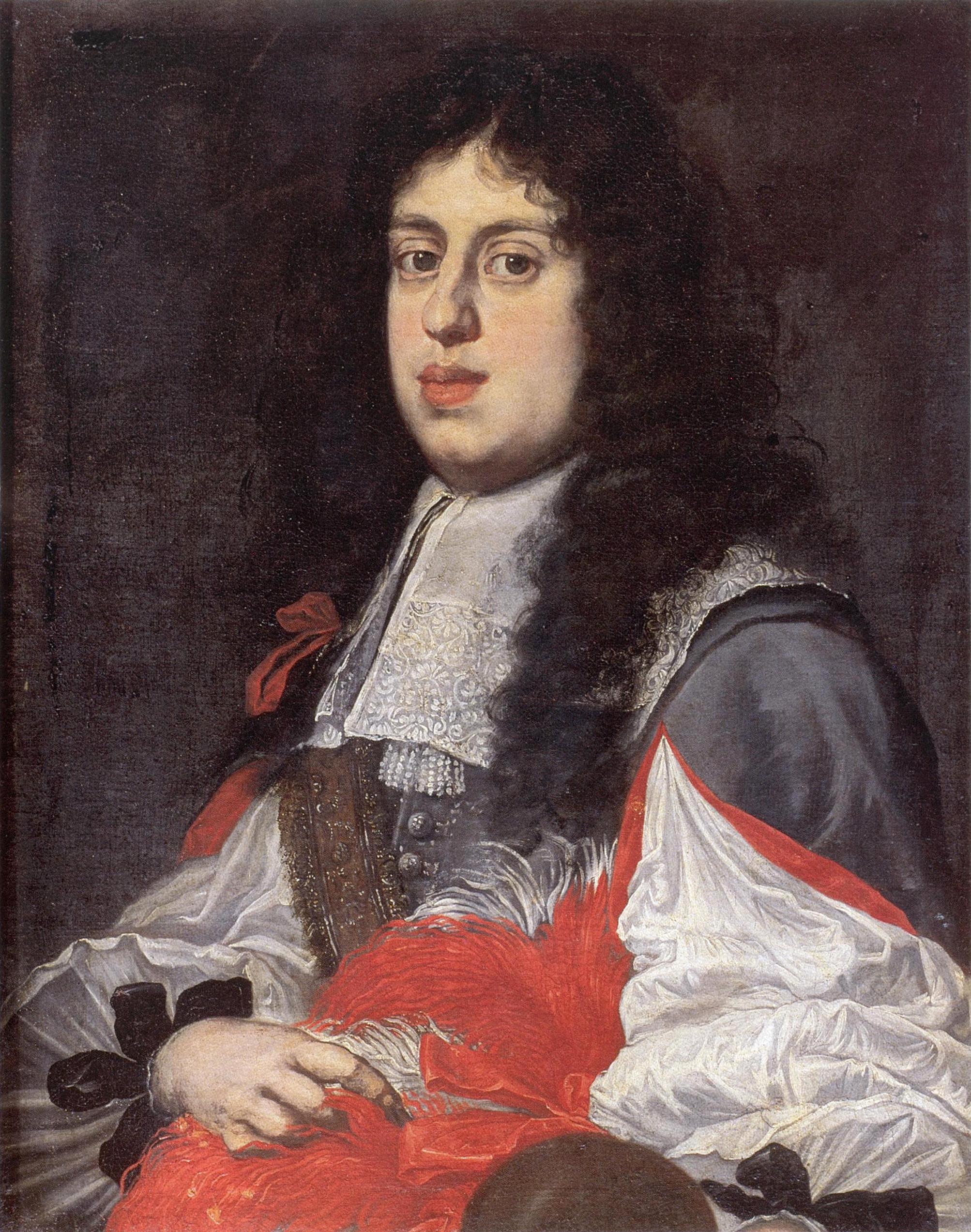
The situation got worse and worse, every attempt to improve it was a failure. Despite it all, marital duties were performed and Marguerite-Louise gave birth to a boy in 1663. Then, in 1664, she left her rooms in the Ducal Palace and refused to enter it again. The Ducal family was dumbstruck again. Cosme moved his wife into the Villa di Lappeggi afterwards and had her watched by forty guards, day and night, as well six courtiers, whom he had selected and instructed not to let her out of sight, for he feared she might run for France.
This semi-house-arrest seems to have done something. Marguerite-Louise made up with the Ducal family, shared her husband’s bed, became pregnant again and gave birth to a girl in 1667… after that, it all went down hill once more.
Nothing changed during the next years. The Grand-Duc died in 1670 and his son Cosme succeeded him as Cosme III. Marguerite-Louise thus became the new Grande-Duchesse and now had to deal with the consequences of being unpopular in Florence. By tradition, the mother of the current Grand-Duc was admitted to the Privy Council and the Council decided to take the tradition up again. The dowager Grande-Duchesse was not at all pleased by Marguerite-Louise’s behaviour in the past years and thus ensured that her daughter-in-law was not allowed a place in the Council as well.
This meant Marguerite-Louise’s exclusion from anything political. The new Grande-Duchesse was furious as she heard of it. She, a grandchild of France, a first-cousin to the King of France, the new first-lady of Tuscany, excluded, while her mother-in-law, a mere della Rovere, was granted a seat. Without a seat, pretty much all she could do was watching over the education of her children.
Marguerite-Louise started to argue about precedence with her mother-in-law again and tried to get Cosme on her side, she shared his bed again with resulted in her last pregnancy and a boy born in May 1671, but Cosme stood firm on the side of his mother. And so, while the new Grande-Duchesse was in an advanced stage of pregnancy, her battle with the old Grande-Duchesse became so heated that it was hard to ignore for everyone.
The Grande-Duchesse became more and more desperate to return home to France. In early 1672, she wrote Louis XIV concerning her fear to have breast cancer and asked for medical aid. Louis sent Alliot le Vieux, who had treated Anne d’Autriche, to Tuscany. Monsieur le Vieux reported back that it was nothing serious. Marguerite-Louise could remain in Tuscany, he said, but ought to take healing waters. That was not exactly what she had hoped for… so she distracted herself with a cook.
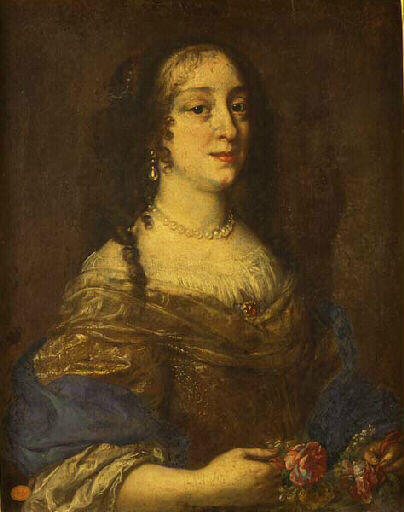
Another attempt at reconciliation was made on behest of Cosme… and it failed again. Marguerite-Louise asked to pay a visit to Villa Poggio a Caiano in order to pray at a shrine nearby. Permission was granted. Once there, the Grande-Duchesse refused to return to the Ducal palace. A two-year stand-off between Grand-Duc and Grande-Duchesse followed, with her refusing to return to Florence and him refusing to let her return to France. Marguerite-Louise begged for his permission, but it was out of the question for him. Louis XIV was forced to make another attempt to bring the couple back together and it failed as well. The King was not happy about it all… but what could he do?
Eventually, Cosme agreed to Marguerite-Louise’s wish to return to France and also Louis XIV ceded. A contract was set up, saying the Grande-Duchesse would receive a pension of 80.000 livres and permission to travel to France to live there, provided that she would take lodgings in the couvent de Montmartre, a bit of a home to noble ladies living in separation from their husbands, and remain within its walls, as well as renounce her rights as Princesse de France. Despite it being quite the set of demands, Marguerite-Louise was overjoyed to finally be able to return home. She left for France half a year later, in July 1675, with carriages laden with all sort of precious things, her wages, she said. Tuscany had mixed feelings about it all. The common people blamed Marguerite-Louise for all that had trespassed, while many of the nobles thought Cosme and his mother drove her away.
The Grande-Duchesse settled at Montmatre once back in Paris and acted as patron, with a pious air and simply dress, but that quickly became too boring for her and she returned to her old ways, including splendid gowns, heavy rouge, and flirtations. She had an affair with the Comte de Lovigny, then with some others, and she did not stick to the “remain within the walls” of the convent either. According to some, Louis XIV allowed her to visit the court whenever she pleased, according to others it was only during family-events. Like the marriage of Monsieur‘s oldest daughter to the King of Spain, where the Louis remarked to the bride, loud enough for the Grande-Duchesse to hear, “Au revoir, Madame, et pour toujours“. A remark that was more of an order, saying Marie-Louise should not even think of writing him about not getting along well in Spain and a desire to return to France.
Cosme, in the meanwhile, made sure that he was informed about everything his estranged wife was up to. The Tuscan envoy sent him word about it and also confronted Louis XIV with it. The Grand-Duc took offence at pretty much everything his wife did and also confronted Louis XIV with it. Louis, who first was on Cosme’s side, got more and more annoyed by it all. The King let the Grand-Duc know that since he had agreed to the return of his wife to France, he was no longer entitled to anything regarding her person or her behaviour. Cosme was forced to stay quiet after it, but word about her movements was still forwarded to him.

And also to Louis XIV. Of his cousin Marguerite-Louise making merry with this and that gentleman, of her keeping to company of people not fit to have that privilege, of her comings and goings and of an affair she had with a groom. Louis decided to question the Abesss of Montmatre, Françoise-Renée de Lorraine, about the latter and was told all one could do about it was to not give it attention by not talking about or mentioning it. In contrary to this Abbess, the next lady to take the office, Marie-Anne de Lorraine-Harcourt, was not willed to remain quiet about it all. She complained to both Louis XIV and the Grand-Duc about it. In turn, Marguerite-Louise formed a group of opposition against her and hinted she might kill the new Abbess with a pistol or a hatchet.
Marguerite-Louise turned to her husband and asked permission to change convents. It was granted and she moved to Saint-Mandé, under the condition that she was only allowed to leave the convent walls with permission of Louis XIV and ought to be attended of a Chamberlain of the King’s choosing. The Grande-Duchesse disagreed with the latter, but was forced to yield after Louis XIV suspended her pension.
Once there, her conduct changed completely. She no longer went about and made merry, but started to reform the convent, which she called a “spiritual brothel”. Marguerite-Louise had the Mother-Superior, who liked to dress in men’s garments, sent away and replaced, as well as nuns who did not act according to the convent rules. Cosme now had nothing to complain about anymore.
The Grande-Duchesse suffered an attack of apoplexy in 1712, which left her left arm paralysed. The death of her oldest son, the only of her children she had been in contact with and loved very much, prompted another attack of apoplexy the following year, which made it difficult for her to speak and made her briefly unable to move her eyes. After the death of Louis XIV, her nephew the Regent allowed her to purchase a house, number 15 at the Place des Vosges, where she spent the remainder of her life. Marguerite-Louise died there 17 September in 1721, without ever having seen her husband again, and was buried at the Cimetière de Picpus.
